At the end of December, I decided to take a trip to Nara. Nara is considered one of Japan’s ancient capitals and, along with Kyoto, is one of the most important regions when discussing Japan’s history and culture.
The first place I visited on my trip was Hōryū-ji Temple. According to my travel plan, I wanted to explore places near JR Nara Station, so I was debating whether or not to make the trip to Hōryū-ji. There are many other temples, like Kōfuku-ji and Tōdai-ji, that are close to the station and I wasn’t sure if I would have enough time to visit them all in depth.
However, Hōryū-ji Temple, a UNESCO World Heritage site, is home to the oldest wooden buildings in the world. There is an undeniable charm that never fades despite the centuries of history. I felt I couldn’t miss the opportunity to visit such an iconic place, so I made the decision to go.
In the end, Hōryū-ji was the most impressive place I visited on this trip. I was completely overwhelmed by the grandeur of the temple. I would be delighted to share with you all the things I saw and felt during my visit to Hōryū-ji.
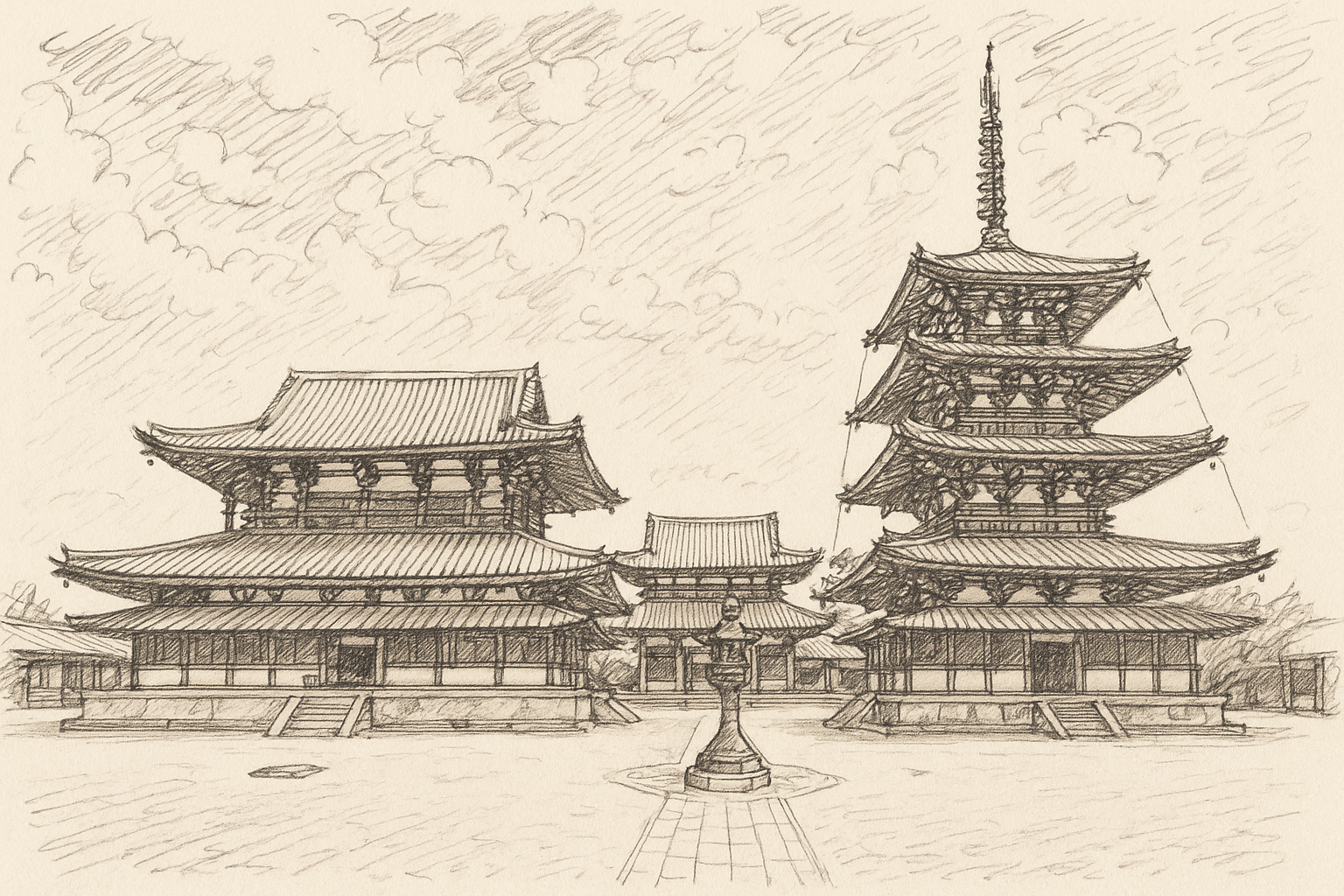
About Hōryū-ji Temple
Hōryū-ji Temple is widely known as the world’s oldest wooden structure, preserving the appearance of the Asuka period. It was also the first site in Japan to be registered as a UNESCO World Heritage site in 1993, and it serves as the head temple of the Shōtoku sect.
The temple’s creation began when Emperor Yōmei prayed for his own recovery from illness and requested the construction of a temple and a statue of Buddha. However, he passed away before his wish could be fulfilled. It was then that Empress Suiko and Prince Shōtoku, honoring Emperor Yōmei’s will, established the temple and created the main Buddha statue, Yakushi Nyorai, in the 15th year of Suiko’s reign (607), marking the beginning of Hōryū-ji Temple.
While the original layout of the temple has been lost over time, the buildings in the Western Precinct, including the Golden Hall, the Five-story Pagoda, the Central Gate, and the Cloisters, were reconstructed in the late 7th to early 8th centuries, and they represent the oldest surviving wooden structures in the world.
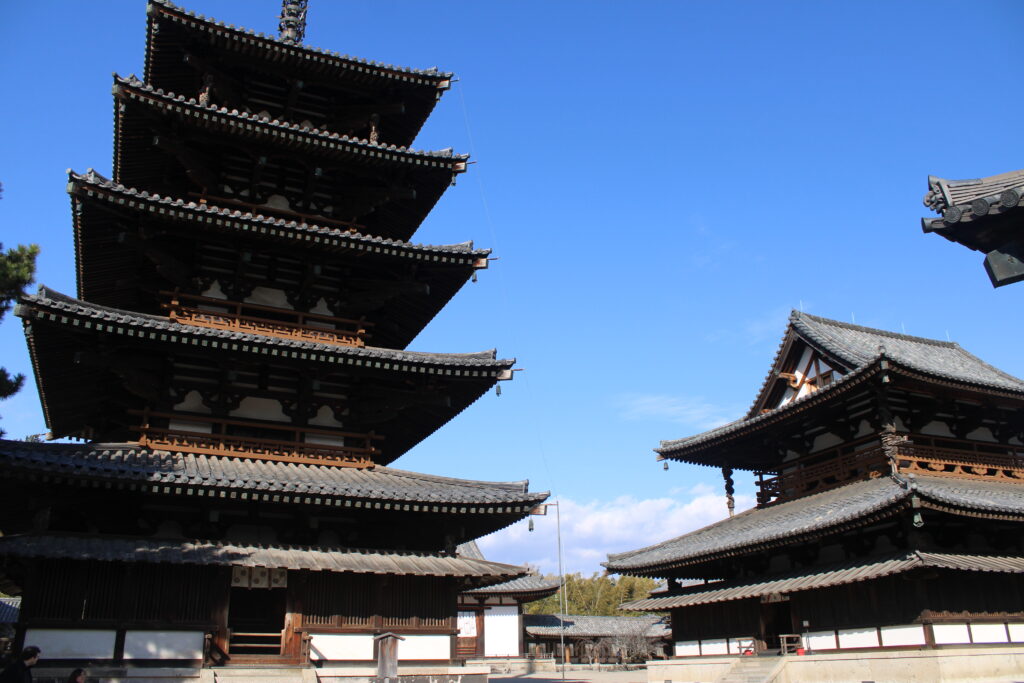
Additionally, the temple houses a vast collection of treasures, with approximately 190 items designated as National Treasures or Important Cultural Properties. In total, there are around 2,500 individual pieces.
Exploring the Temple Grounds
It takes about 20 minutes to walk from JR Hōryū-ji Station to Hōryū-ji Temple. Since the temple grounds are quite expansive, I would recommend using a bus or other forms of transportation for those who may not feel confident in their physical stamina.
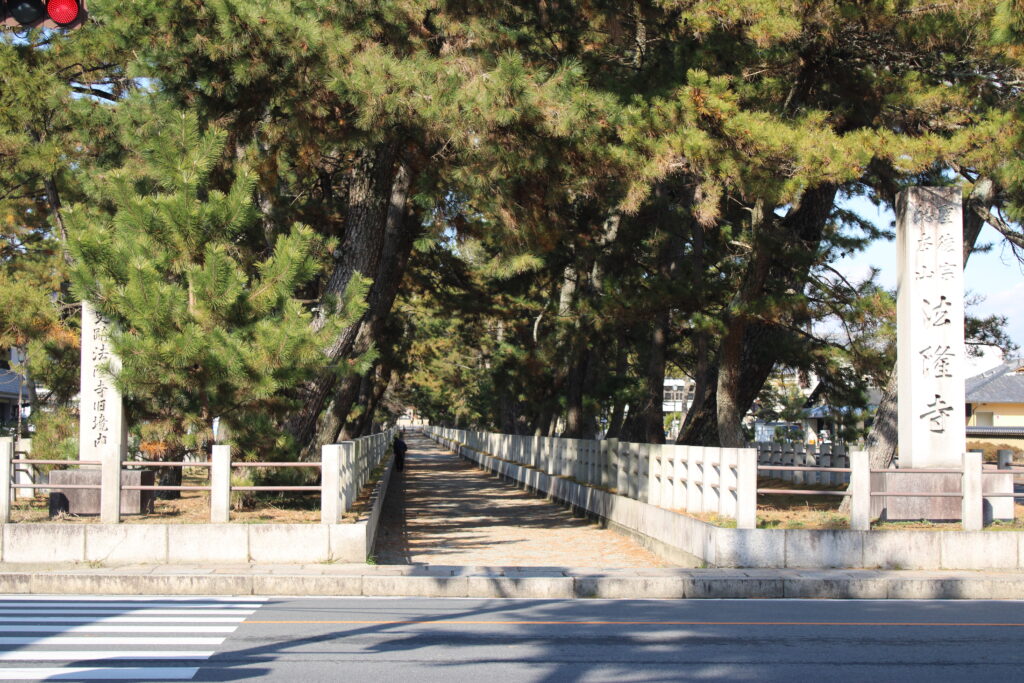
This time, I entered the temple grounds through the South Gate and decided to explore in the following order: the Western Precinct, the West Round Hall, the Great Treasure House, and the Eastern Precinct. Since the temple grounds are quite large, I imagine that most visitors might become tired from walking around Hōryū-ji alone.
South Gate (Nandaimon)
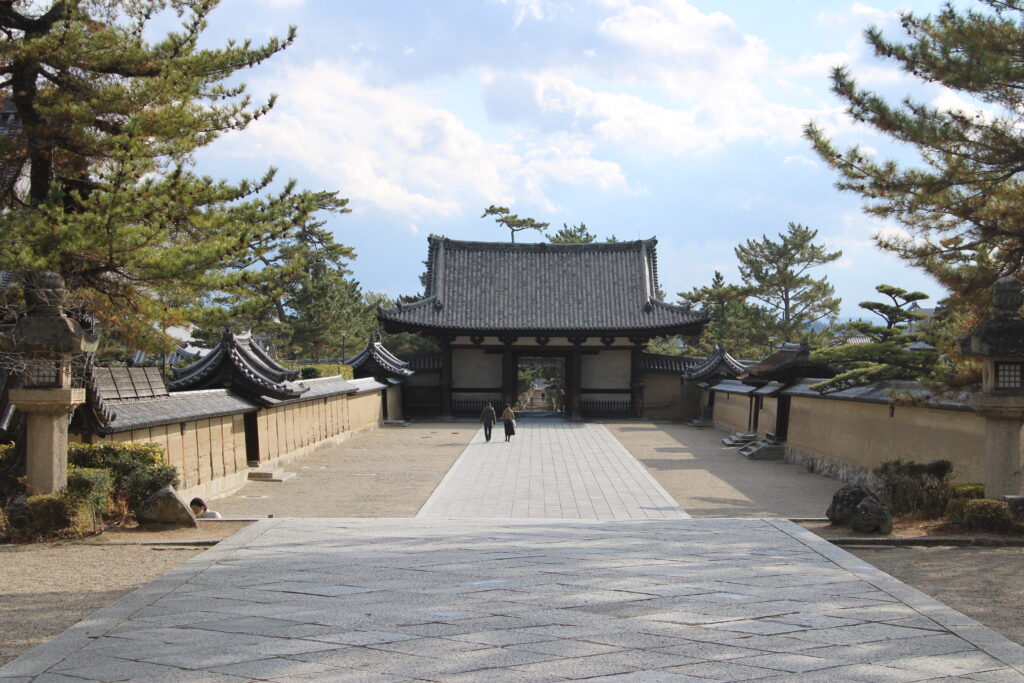
The South Gate, which serves as the entrance to Hōryū-ji Temple, was rebuilt in the 10th year of the Eitei era (1438). Upon arriving at this gate, I truly began to feel that I finally arrived at Hōryū-ji. At the same time, excitement built as I anticipated what the inside of the temple would be like.
Western Precinct (Saiin Garan)
If you walk straight through the South Gate, you will arrive at the Western Precinct. This is where you will immediately encounter the temple’s most impressive sights!
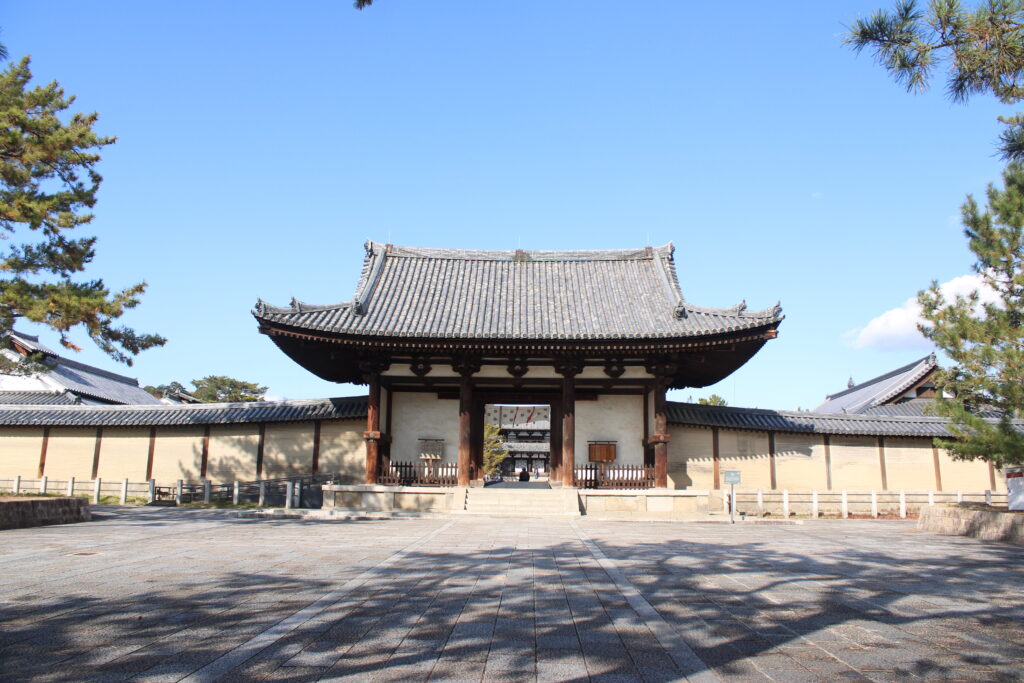
First, you are greeted by the Central Gate. Not only is the building itself designated as a National Treasure, but the statues of the Kongōrikishi (Guardian Deities) standing on either side also exude great power and presence. These statues are believed to have been created during the Nara period, yet their exquisite craftsmanship makes them look as though they could have been made in a later era.
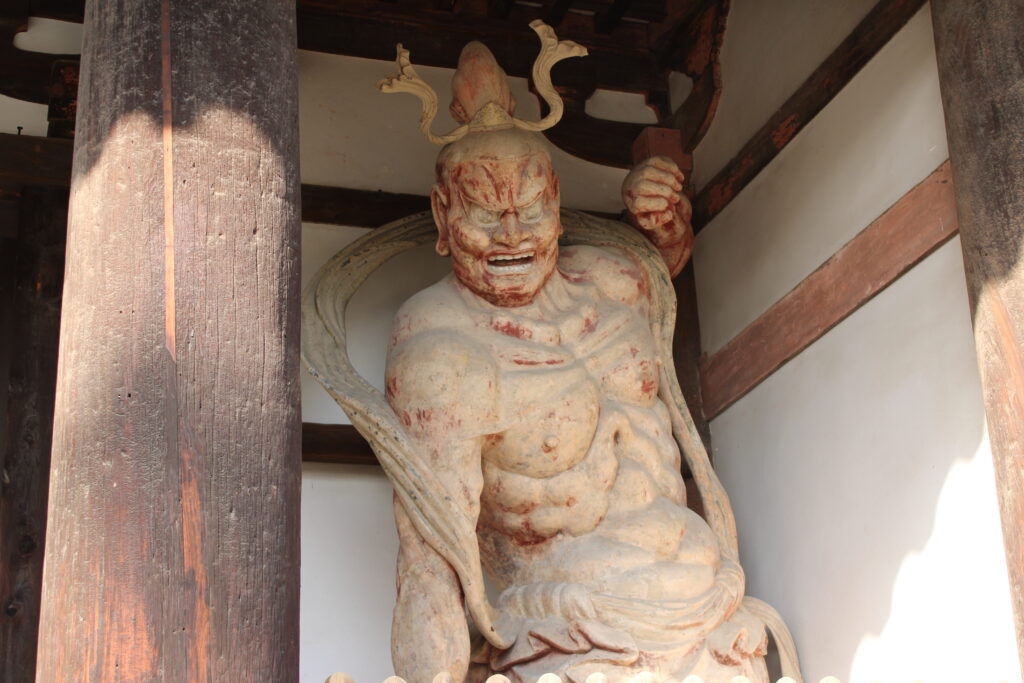
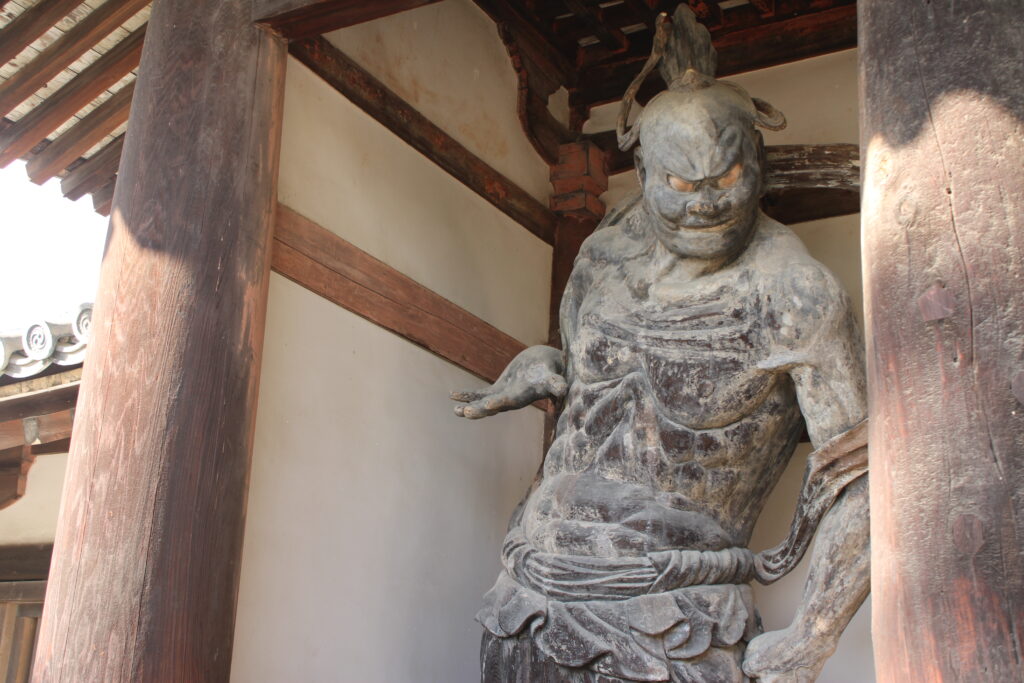
I was overwhelmed by the powerful presence of the Kongōrikishi statues, but gathered my courage and stepped inside the Western Precinct. The cloisters surrounding the Western Precinct are also designated as National Treasures. These were constructed during the Asuka period, and while the pillars and other elements appear quite ancient, I truly felt the weight of history right before my eyes.
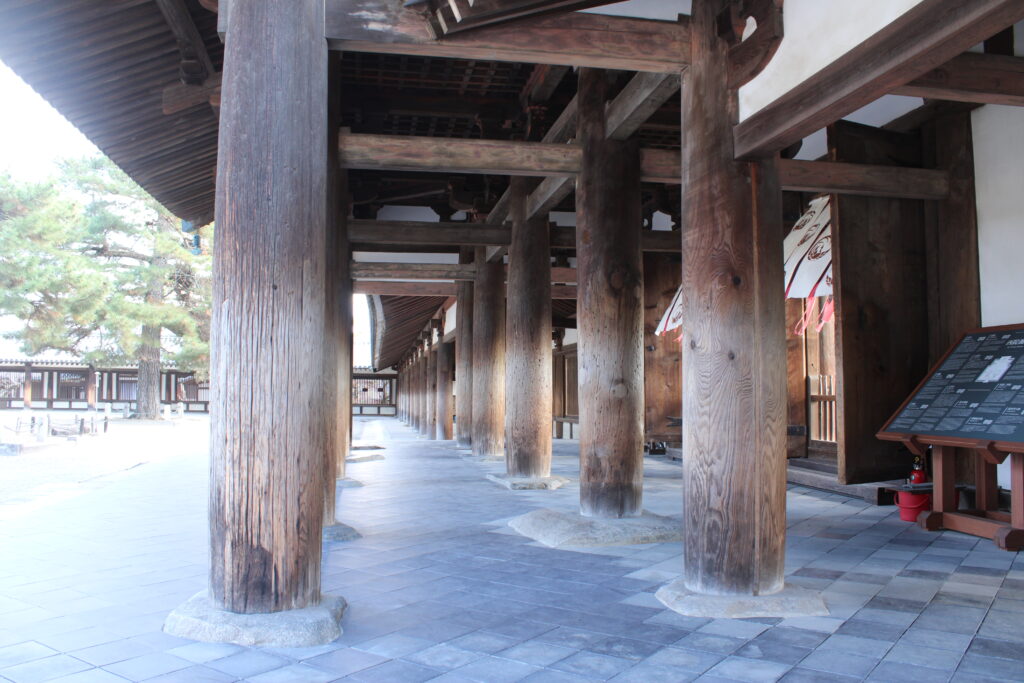
Next, the most striking feature is the Five-story Pagoda. Its presence is truly overwhelming. Standing at about 32.5 meters tall, it is also known as the oldest five-story pagoda in Japan.
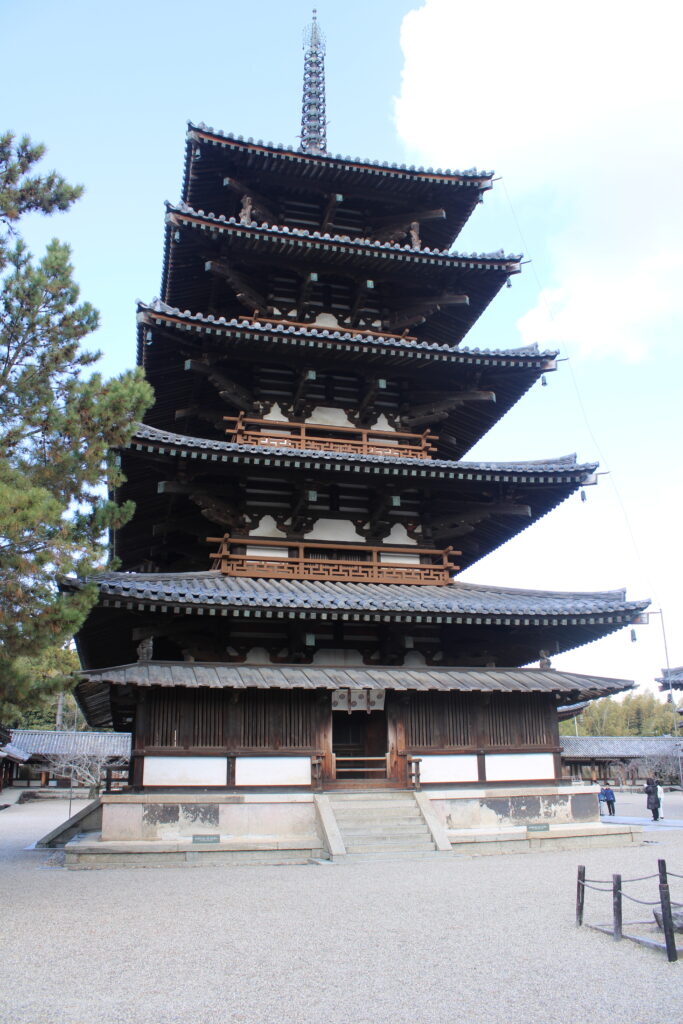
Another highlight is the Golden Hall (Kondō). On the day I visited Hōryū-ji, there was a strong wind, and the bell hanging from the Golden Hall rang with a beautiful sound. I couldn’t help but stop and listen to its melody, but with the cold December weather in Nara, I couldn’t stand still for too long. Still, the resonant sound stayed with me, and it’s something I will never forget.
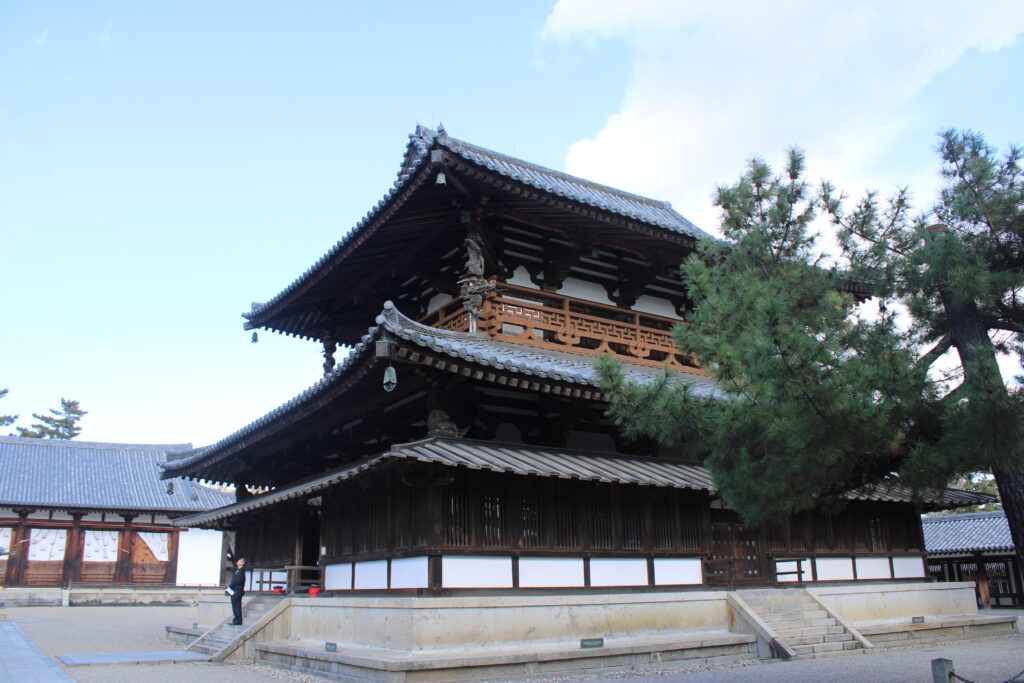
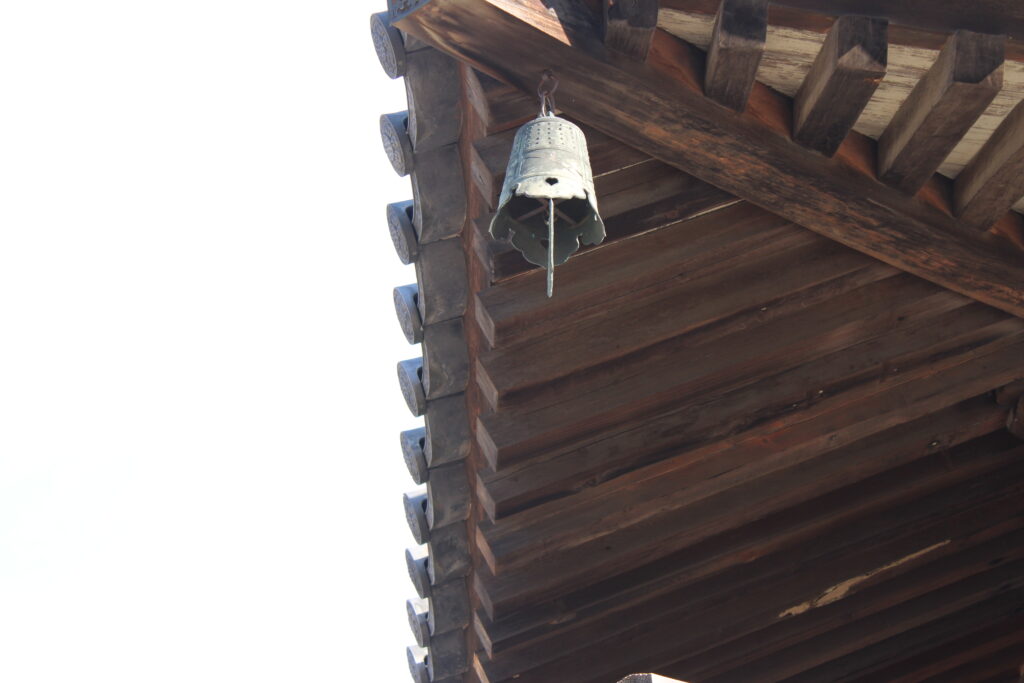
Tori, who is said to be the first person in Japan to create Buddhist statues. While the statue represents Shakyamuni, it is also considered to be a likeness of Prince Shōtoku himself. This connection highlights Hōryū-ji’s role as the temple dedicated to the memory of the prince, making it a truly significant statue.

Another must-see is the statue of Yakushi Nyorai . Remarkably, the inscription on the back of its halo contains a record of the origin of Hōryū-ji’s founding. This makes it a historically invaluable piece.

As I observed these Buddhist statues created during the Asuka period, I could clearly see the differences between them and those made during the Heian and Kamakura periods. Naturally, the later statues exhibit higher levels of refinement. However, being able to view works from the early days of Buddhist sculpture up close was deeply moving and almost brought me to tears. Experiencing the beginning of Japanese Buddhist sculpture was truly an extraordinary experience.
Since photography is not allowed, I recommend visiting Hōryū-ji’s official website for those who are interested in seeing more (as photography of the interiors of the buildings is generally not permitted, I will provide the website link).
Main Hall (Kondo) | Horyuji Temple
Finally, the Great Lecture Hall (Daikōdō) is located further in. As shown in the photo below, the front of the hall features several wooden doors. When the wind blows strongly, the wooden doors creak, creating a sound that adds an irresistible sense of charm to the atmosphere. If you get the chance, I highly recommend pausing and listening carefully to this beautiful, subtle sound.
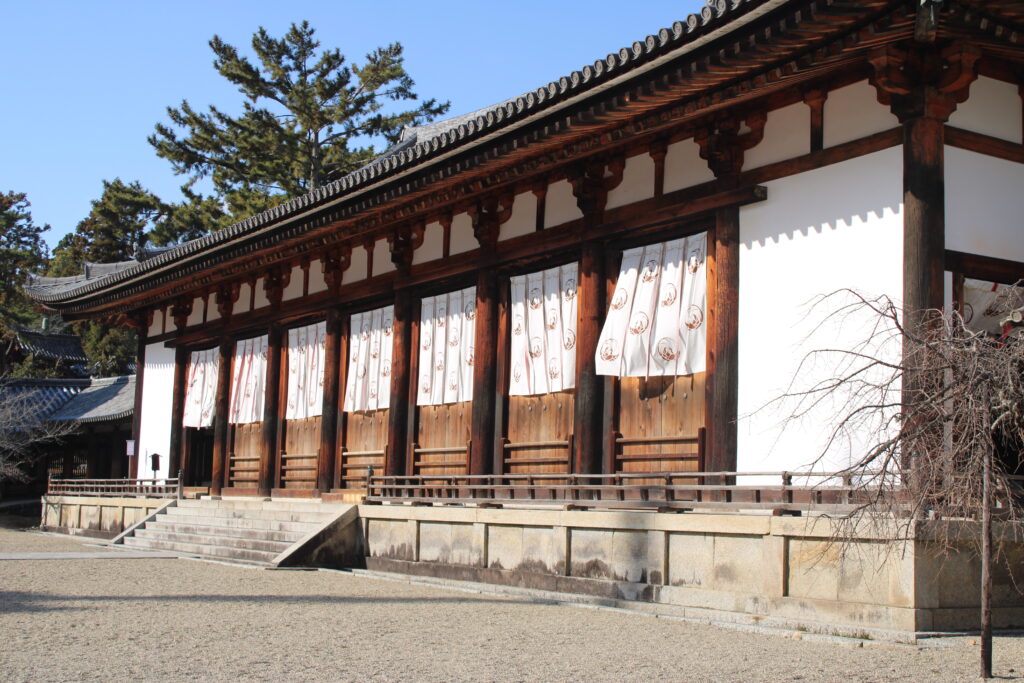
The interior of the Great Lecture Hall is also a major highlight. Inside, you’ll find the Yakushi Sanzon (Three Buddha Statues), which are designated as National Treasures and date from the Heian period. I encourage you to take note of the differences between these and the Asuka period statues I mentioned earlier.

By the way, there are three key characteristics of Asuka period Buddhist statues. First, they feature the “Archaic Smile,” where the expression is minimal, but the mouth has a slight smile. Second, they exhibit “Frontal Gaze,” meaning that the statues are designed to look harmonious from the front, without consideration for their profile. Lastly, there is a strong “Symmetry” in the design.
In contrast, during the Heian period, the influence of Japanese culture began to shape Buddhist sculptures, resulting in faces that have a more distinctly Japanese appearance. The craftsmanship also improved, and these statues reflect a more refined image of what many people today might typically envision when thinking of Buddhist statues.
Great Lecture Hall | Horyuji Temple
West Round Hall (Saiendō)
The West Round Hall is located off the main sightseeing route, but it is definitely a place worth visiting.
The first reason is that the building itself is designated as a National Treasure. It is said to have been founded by Lady Tachibana in the Nara period, with the temple constructed in 718 by the Buddhist priest Gyōki. The current octagonal structure was rebuilt in the Kamakura period, around 1250.
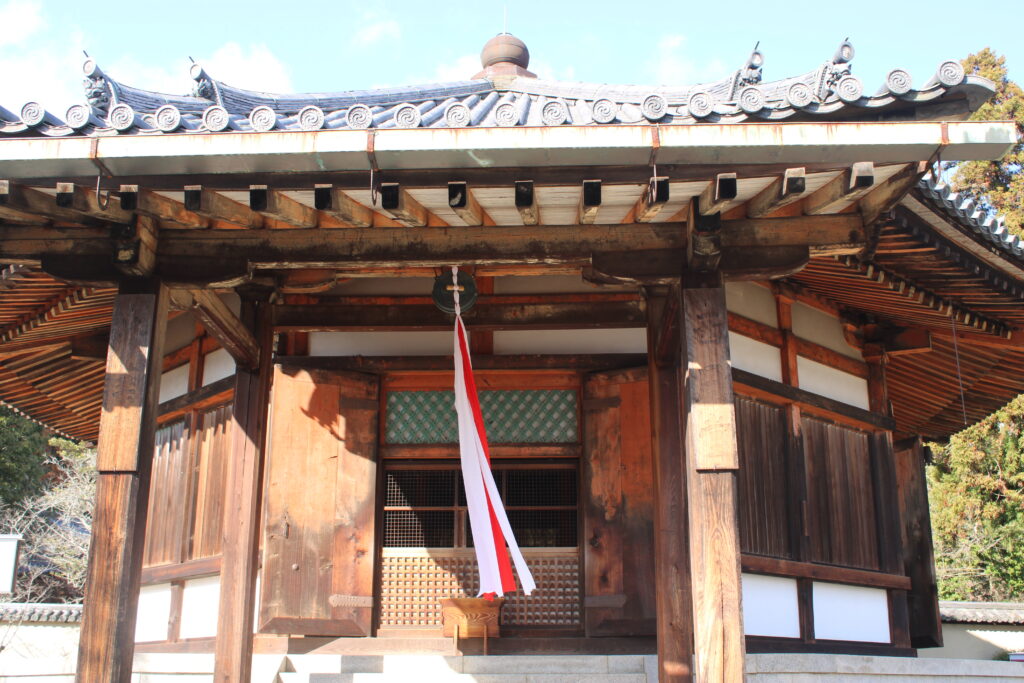
The second reason to visit is that the temple houses the main Buddha, Yakushi Nyorai, which is known as one of Japan’s largest dry-lacquer statues from the Nara period. This statue is also designated as a National Treasure.

The third reason is the beautiful view. The West Round Hall is located on a slightly elevated area, allowing you to enjoy a wide view of the Hōryū-ji temple grounds. You can see the Five-story Pagoda clearly from here, and the scenery is quite impressive. I was almost tempted to shout “Yoo-hoo!” towards the pagoda, but decided against it, not wanting to be seen as strange!
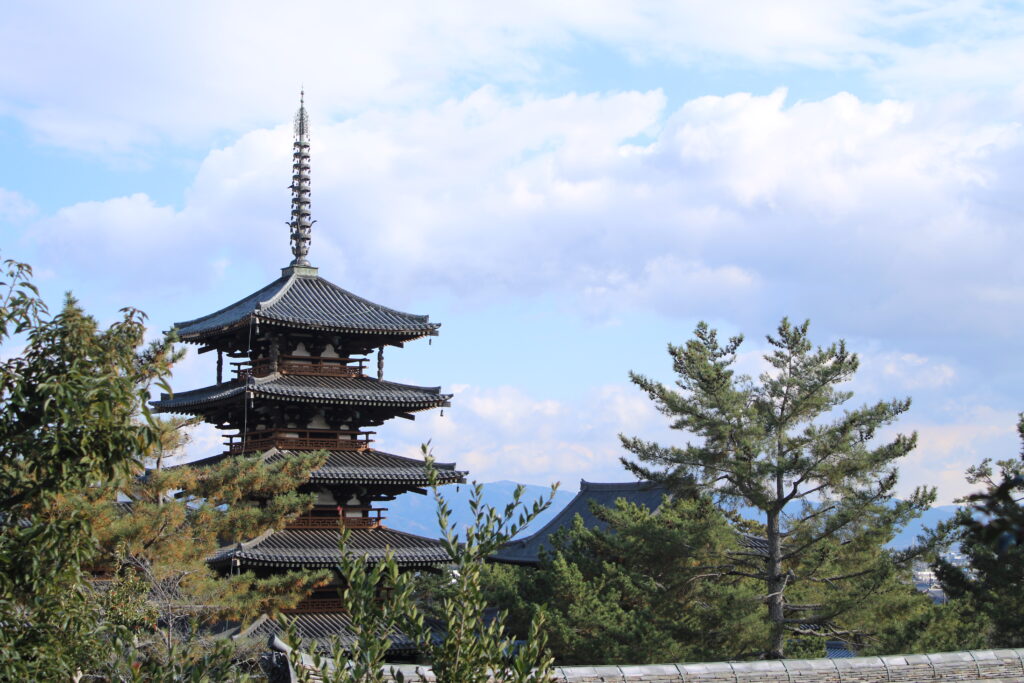
Great Treasure Gallery (Daihōzōin)
If you head back towards the Western Precinct from the West Round Hall and pass through the Western Precinct, you will come to the Great Treasure House, which was completed in 1998. The building itself is relatively new and doesn’t hold significant historical value, but inside, you’ll find a large number of extremely valuable treasures on display.
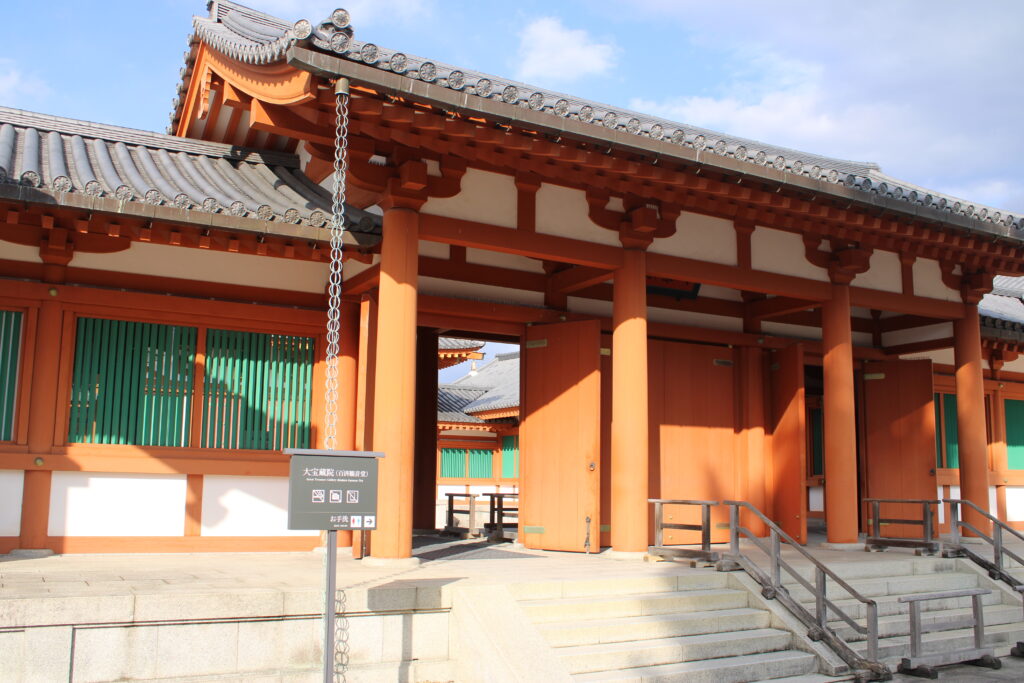
First, there is the famous Statue of Kudara Kannon from the Asuka period, which is internationally renowned as one of Japan’s representative Buddhist art pieces. Its slender, eight-headed proportions and distinctive expression are rare among Japanese Buddhist statues and continue to captivate many people. I, too, was drawn in by its mysterious charm and spent some time observing it from various angles.
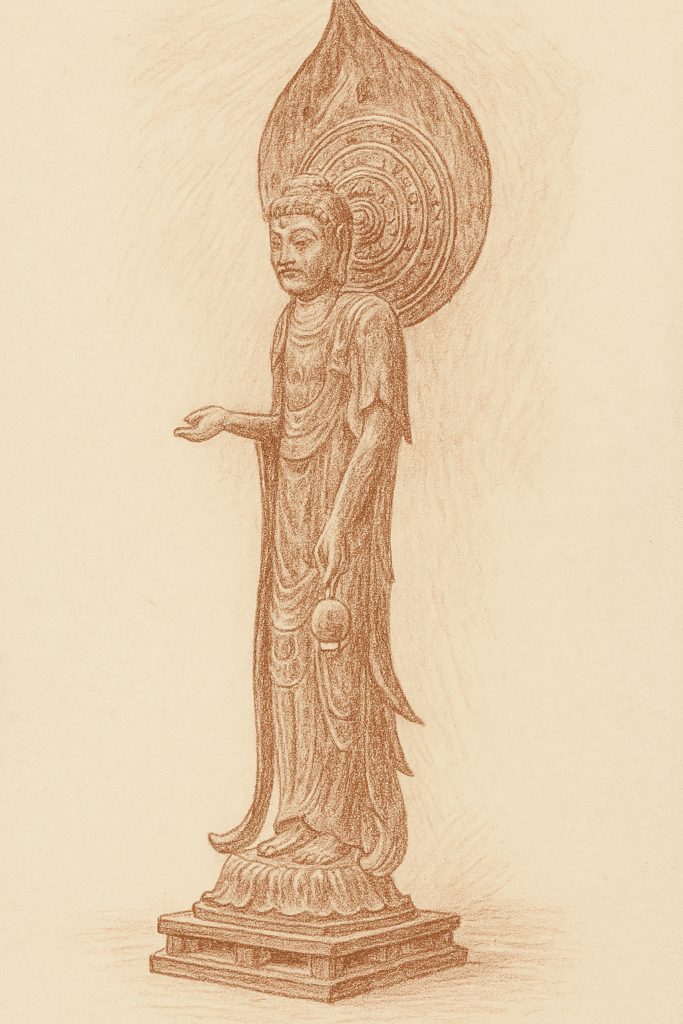
In addition to this, there are many other National Treasures, such as the Tamamushi Tabernacle (Asuka period), believed to have been owned by Empress Suiko, and the Lady Tachibana Shrine (Hakuhō period), which enshrines a gilt bronze Amida Triad statue seated above a lotus pond.
Among these treasures, the one that left the strongest impression on me was the Yumechigai Kannon. It is said that praying to this statue can turn bad dreams into good ones, which is how it got its name. Yume means a dream. Chigai means difference. With a youthful face and a warm expression, it gave me a sense of encouragement and positivity.

Great Treasure Gallery | Horyuji Temple
Eastern Precinct (Tōin Garan)
After leaving the Great Treasure Gallery, if you head south, you will see the Eastern Gate (Tōdaimon) on the east side. This gate, which was built during the Nara period, is designated as a National Treasure. It follows the “Mitsumunedukuri” architectural style, with three main beams running north to south—one in the center and two on either side. This gate is a rare and valuable example that preserves the architectural style of the Nara period. It would be a shame to pass by without appreciating its historical significance, as it is more than just a gate.
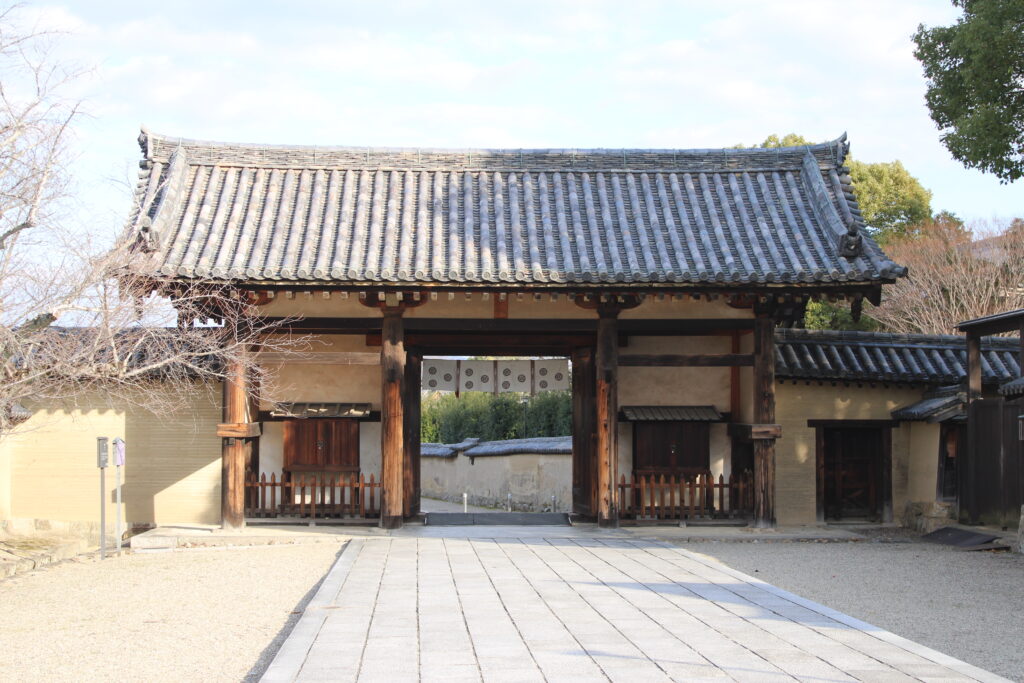
Passing through the Eastern Gate and walking straight ahead, you will arrive at the Eastern Precinct (Tōin Garan).
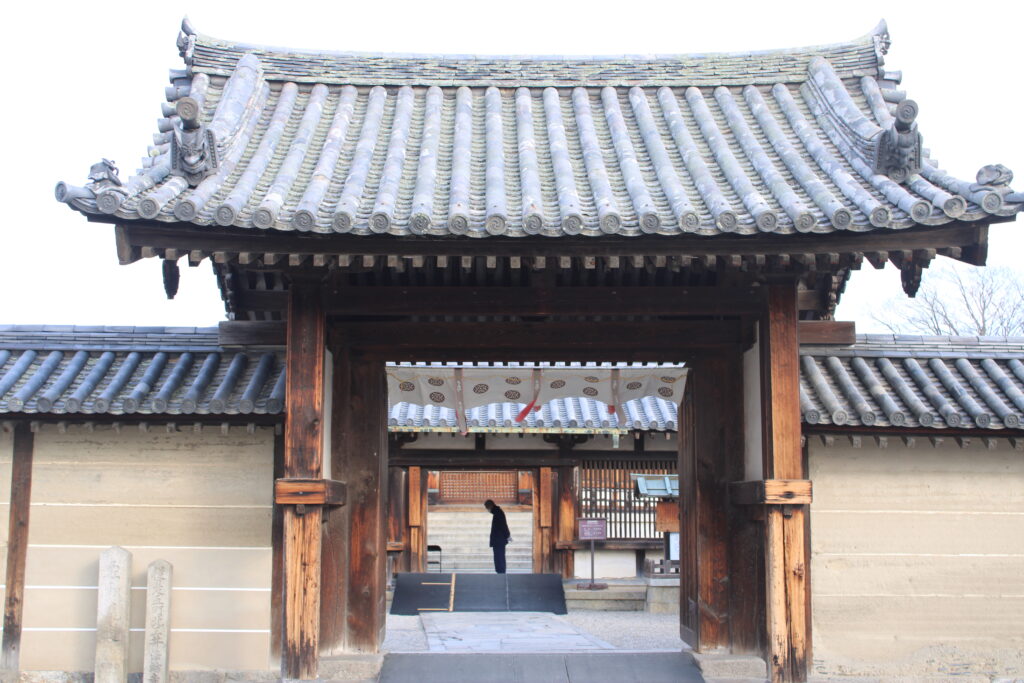
The most notable feature is the Yumedono (Hall of Dreams). Built in 739 by the high priest Gyōshin Sōzu to honor the legacy of Prince Shōtoku, this hall was part of the Jōgū-ōin temple complex, which was constructed on the site of the Ikaruga-no-miya, the palace of the Prince. The central building of this complex is the Yumedono. Inside its octagonal hall, there is a sacred statue of Kuse Kannon, which is a secret Buddha statue depicting Prince Shōtoku in life-size form, created during the Asuka period.

Unfortunately, the Kuse Kannon statue is only displayed during certain periods in spring and autumn, so I wasn’t able to see it during my visit…
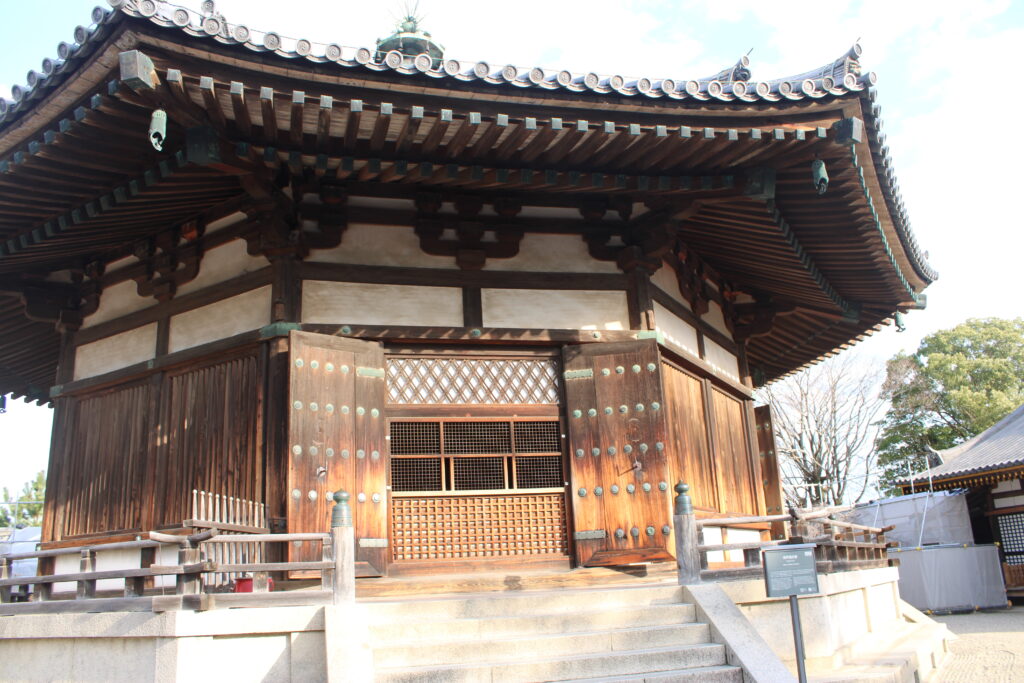
In addition, the Eden (Painted Hall) and the Shariden (Relic Hall) are also worth noting. The buildings themselves are beautiful, and their architectural details make them an important part of the temple complex to admire.
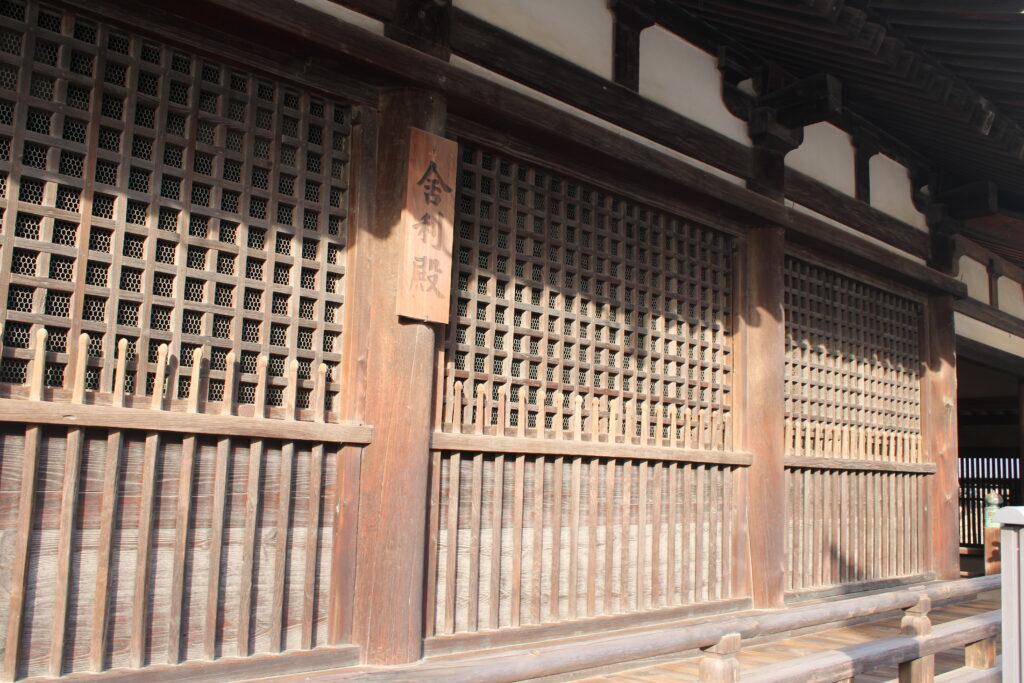
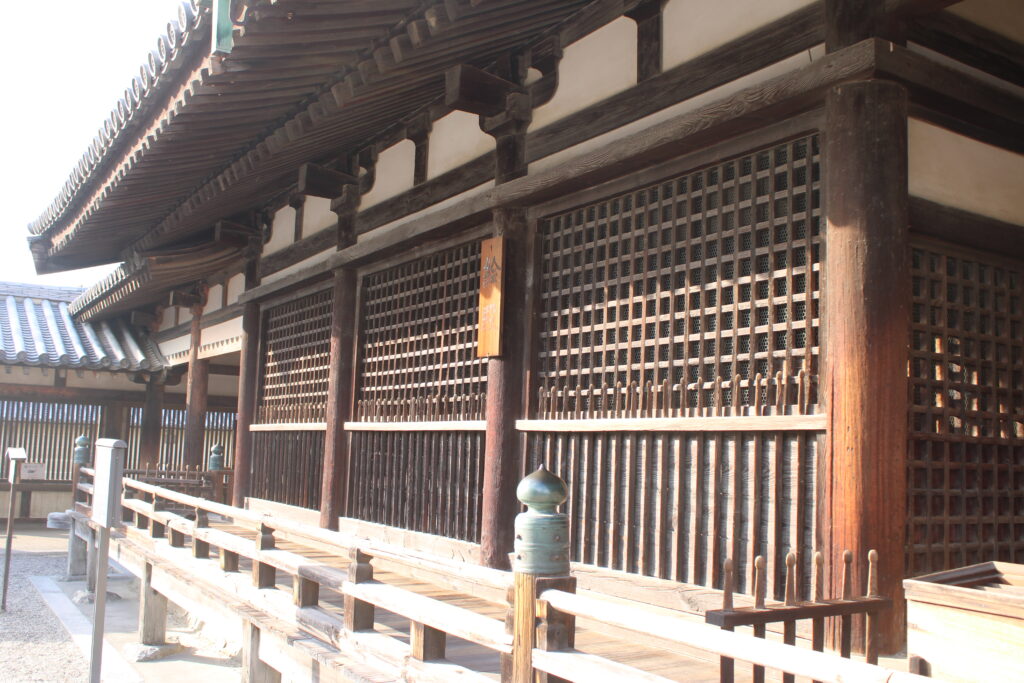
Conclusion
How was it?
I hope the charm of Hōryū-ji Temple, a UNESCO World Heritage site, has been conveyed to you. Ultimately, I believe that experiencing it in person, rather than through photos, is the best way to truly feel its presence. Especially with Buddhist statues, since photography is not allowed, I encourage you to see them with your own eyes and etch them into your memory.
As I mentioned in this article, the “sounds” of the temple are also something I hope you can experience firsthand.
Personally, Hōryū-ji is the most beloved place I have visited among all the temples and shrines. While I have visited many places like Kamakura and Nara, Hōryū-ji is truly special.
I believe that by studying more about the Asuka period and Prince Shōtoku, the perspective I have on the temple will change. That’s why I feel the urge to study further and visit again in a few years.
If you are planning to travel to Nara, I strongly recommend Hōryū-ji. For anyone with an interest in history, it will undoubtedly be an unforgettable experience.

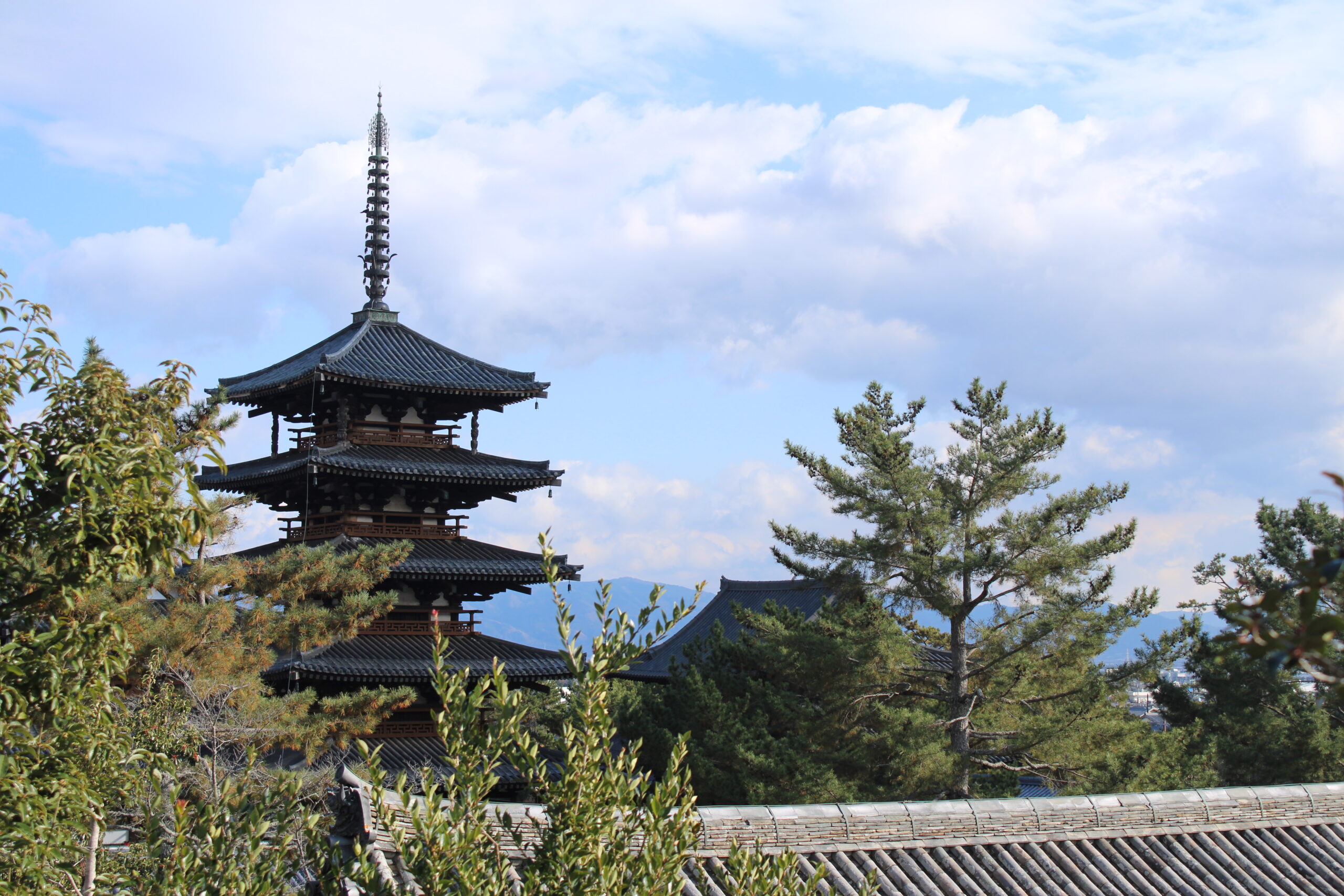


コメント